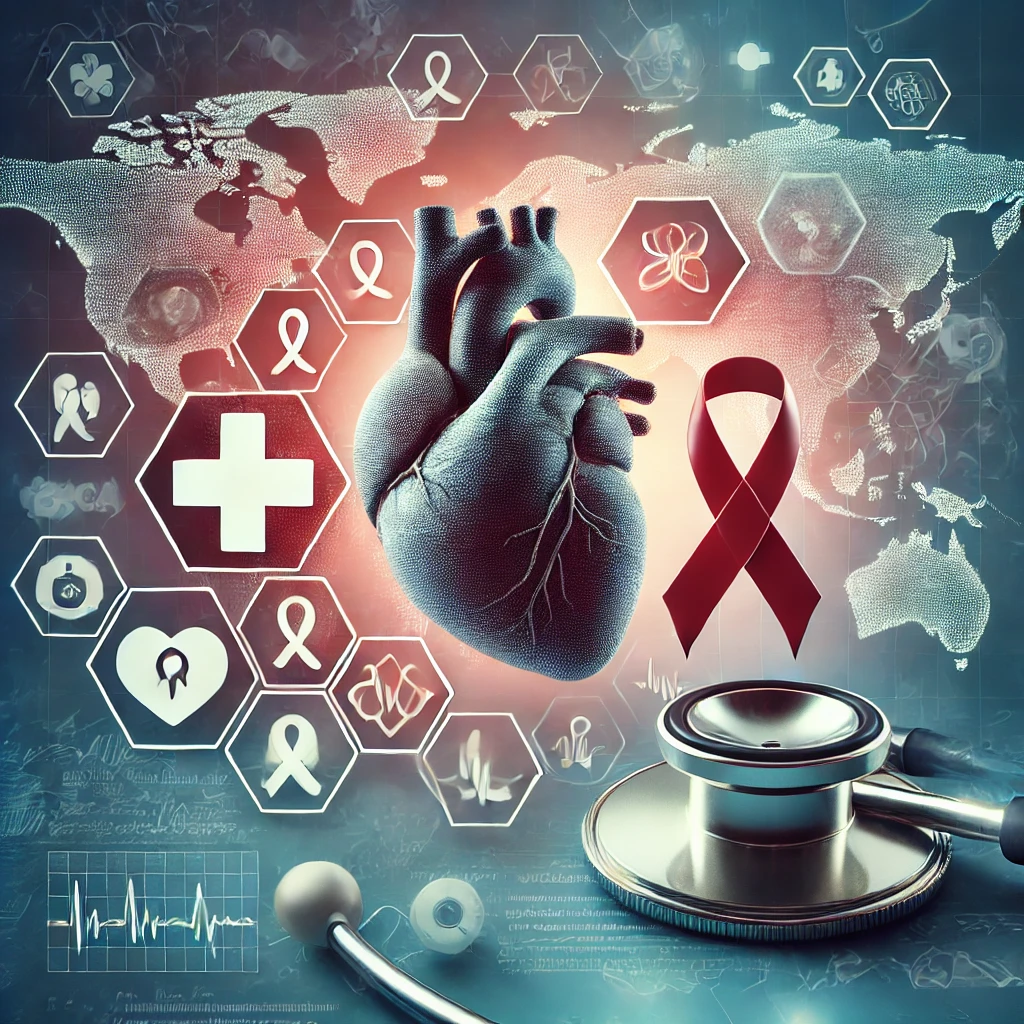According to the report, every two seconds, one person under the age of 70 dies from a non-communicable disease (NCD), with 86% of those deaths occurring in low- and middle-income countries. This highlights the severe impact of NCDs on global health, particularly in developing nations.
Non-communicable diseases, also known as chronic diseases, tend to be of long duration and result from genetic, physiological, environmental, and behavioral factors. The major types of NCDs include cardiovascular diseases, cancers, chronic respiratory diseases, and diabetes. Key risk factors include tobacco use, an unhealthy diet, the harmful use of alcohol, physical inactivity, and air pollution.
- In India, NCDs are a significant concern, with over 60 lakh deaths in 2019 attributed to these diseases. Cardiovascular diseases, chronic respiratory diseases, cancer, and diabetes are the leading causes of death.
- Globally, the WHO is leading efforts to reduce NCD mortality by one-third by 2030 as part of the Sustainable Development Goals (SDG 3.4).

Key Highlights of the WHO Report
The World Health Organization (WHO) recently released its report “Invisible Numbers: The True Extent of Non-communicable Diseases and What to Do About Them,” highlighting the severe impact of non-communicable diseases (NCDs). Alarmingly, every two seconds, one person under the age of 70 dies from an NCD, with 86% of these deaths occurring in low- and middle-income countries.
Global Statistics
Non-communicable diseases have a profound global impact. The WHO report states that cardiovascular diseases account for one in three deaths annually, totaling 17.9 million. Hypertension affects around 1.3 billion adults, predominantly in low- and middle-income countries. Shockingly, nearly half of those with hypertension are unaware of their condition, highlighting a significant public health challenge.
Major Diseases
The report identifies major NCDs such as diabetes, cancer, and respiratory diseases. Diabetes causes one in 28 deaths annually, with over 95% being type 2 diabetes. Cancer is responsible for one in six deaths, amounting to 9.3 million annually, with 44% of these deaths preventable. Chronic respiratory diseases account for 70% of preventable deaths, underscoring the need for effective health interventions.
Impact of Covid-19
The Covid-19 pandemic has exacerbated the challenges in managing NCDs. The early months saw a 75% disruption in essential NCD services worldwide. The pandemic highlighted the interplay between infectious diseases and NCDs, further complicating care and increasing vulnerability among those with chronic conditions.
Sustainable Development Goals
The progress towards Sustainable Development Goal (SDG) target 3.4, which aims to reduce early deaths from NCDs by a third by 2030, remains slow. According to the WHO portal, only a few countries are on track to meet this target, emphasizing the need for intensified global efforts and policy interventions.
Understanding Non-Communicable Diseases
Non-communicable diseases (NCDs), also known as chronic diseases, are characterized by their long duration and slow progression. They result from a combination of genetic, physiological, environmental, and behavioral factors, making them complex to manage and prevent.
NCDs include cardiovascular diseases, cancers, chronic respiratory diseases, and diabetes. These conditions are influenced by various factors, including genetic predispositions and lifestyle choices such as diet and physical activity. They pose a significant burden on health systems due to their chronic nature and the need for long-term care.
Causes
Several risk factors contribute to the prevalence of NCDs. Tobacco use, unhealthy diets, harmful alcohol consumption, physical inactivity, and air pollution are primary contributors. Addressing these risk factors through public health initiatives is crucial in reducing the global burden of NCDs.
Status of Non-Communicable Diseases in India
In India, non-communicable diseases present a significant public health challenge. According to WHO, over 60.46 lakh people died due to NCDs in 2019. Cardiovascular diseases led to 25.66 lakh deaths, chronic respiratory diseases to 11.46 lakh, cancer to 9.20 lakh, and diabetes to 3.49 lakh, highlighting the urgent need for effective health interventions.
National Statistics
The national statistics reveal a high mortality rate due to NCDs in India. Cardiovascular diseases are the leading cause, followed by chronic respiratory diseases, cancer, and diabetes. These statistics underscore the urgent need for comprehensive healthcare policies and programs to address the NCD burden.
Indian Initiatives for Non-Communicable Diseases
The Indian government has implemented various initiatives to combat non-communicable diseases. These programs aim to reduce the incidence and improve the management of NCDs through preventive and curative measures.
National Programme for Prevention and Control of Cancer, Diabetes, Cardiovascular Diseases and Stroke (NPCDCS)
NPCDCS is a key initiative under the National Health Mission. It focuses on preventing and controlling cancer, diabetes, cardiovascular diseases, and stroke. The program aims to reduce mortality and morbidity associated with these NCDs through early detection, diagnosis, and treatment.
Strengthening Tertiary Care Cancer Facilities Scheme
This scheme supports the establishment of State Cancer Institutes and Tertiary Care centers across India. These specialized centers aim to provide advanced cancer care, including diagnosis, treatment, and research, to improve patient outcomes and reduce cancer-related mortality.
Pradhan Mantri Swasthya Suraksha Yojana (PMSSY)
PMSSY focuses on enhancing healthcare infrastructure, particularly in oncology, through new AIIMS and upgraded institutions. This initiative aims to improve access to quality cancer care and treatment facilities, addressing the growing burden of cancer in India.
Affordable Medicines and Reliable Implants for Treatment (AMRIT)
AMRIT Deendayal outlets provide cancer and cardiovascular disease drugs and implants at discounted prices. These outlets, located in 159 institutions/hospitals, aim to make essential medicines and treatments more affordable and accessible to patients.
Jan Aushadhi Stores
Jan Aushadhi stores, set up by the Department of Pharmaceuticals, offer generic medicines at affordable prices. These stores aim to reduce healthcare costs and improve access to essential medicines, particularly for those with chronic conditions.
Global Initiatives for Non-Communicable Diseases
Global efforts to combat non-communicable diseases involve coordinated actions by key organizations and frameworks. These initiatives aim to reduce the global burden of NCDs through prevention, treatment, and policy interventions.
Agenda for Sustainable Development
As part of the 2030 Agenda for Sustainable Development, world leaders committed to reducing premature mortality from NCDs by one-third by 2030 (SDG target 3.4). This commitment involves developing ambitious national responses and implementing effective health policies to achieve this target.
WHO Global Action Plan
The WHO Global Action Plan for the Prevention and Control of NCDs has been extended to 2030. The plan includes an Implementation Roadmap from 2023 to 2030, outlining strategies to achieve nine global targets. These targets focus on the prevention, management, and control of NCDs to reduce their impact globally.


